Microbiology
Microbiology is a branch of biology. Its major focus include the study of microbial morphology, structure and activities of life and the basic principle under certain conditions as well as microbial evolution, classification and its mutual interaction and relation with humans, animals and plants as well as the natural environment. Task for the microbiology researchers includes application of beneficial micro-organisms for human being to the production and practice while transforming, control or eradication of micro-organisms which are harmful to human beings, thus boosting the microbiology to the direction of human demands.
Microorganism is a kind of small creatures of tiny body, simple structure and being invisible that presented in the natural environment. Only with the magnification of several hundred times, thousands of time, even a few ten thousands time through optical microscope or electron microscope can we observe the details of them. Although they are individually small, they still have certain morphology and structure, and can have various kinds of characteristics including rapid reproduction, being easily to get variation, various types of nutrition and strong capability of adaption to various kinds of environment. It is extremely widely distributed in nature with large amount of them existing in rivers, lakes, oceans, soil, air, mineral layers and others places. There are various kinds of parasitic microorganisms existing in the body surface of humans, animal and plants as well as the respiratory tract, gastrointestinal tract and other cavity connected to the outside world. The classification of microbial species is very complicated, including bacteria, viruses, chlamydia, rickettsia, mycoplasma, spirochetes, actinomycetes and fungi. Except the non-cell type of viruses, they all belong to Protista. Based on the differences in cell structure and composition, etc., it can be further divided into two categories including prokaryotic cell type and eukaryotic cell type.
Therefore microorganisms include:
- non-cell type microbes: mainly virus; virus belongs to non-cell type microbes and is comprised of nucleic acid (DNA or RNA) and protein shell with some kinds, in addition, containing a layer of lipid envelope. It has a very tiny volume and is capable of penetrating through a sterilization filter. It is generally not able to be observed under an optical microscope and is only visible after being enlarged for several thousands of times under an electron microscope; and is a kind of microbes which need strictly parasites in susceptible cells to proliferate in the form of replication In recent years, it has been also found of viroid contains no protein shell but only a bare nucleic acid.
- Prokaryotic microbial cells: it only contains the original nucleus without nuclear membrane and nucleolus; it doesn’t precede mitosis and is lack of organelles. Prokaryotic microbial include bacteria, Chlamydia, Rickettsia, Mycoplasma, spirochetes, and actinomycetes.
- Eukaryotic microbial cells: it has a high-degree differentiated nucleus, containing nuclear membrane and nucleolus, be able to precede mitosis with complete cytoplasmic organelles. For example, fungi is also a kind of eukaryotic microbe.
Natural existing microorganisms not only have various kinds of species, large quantity but also play various kinds of roles. Most of them are beneficial to humans and animals as well as plants, and are indispensable as well. The cycling of many kinds of substances depends significantly on the action of microorganisms, for example, the nitrifying bacteria existing in the soil can decompose organic amide to produce ammonia, promoting the growth of nitrite bacteria; nitrite bacteria is able to oxidize ammonia to form nitrite, providing metabolic raw materials for the nitrate bacteria; nitrate bacteria can oxidize the nitrous acid to generate nitrate to supply the nutrient sources for plant growth and development. The plants can further utilized by animals and human beings. From this perspective, if there are no microorganisms, plants are not capable of preceding metabolism, humans and animals will also not able to survive.
In the field of agriculture, in addition to the applications of nitrogen-fixing bacteria and actinomycetes 5406 with anti-disease, growth promotion and fertilizer-efficiency improving effect, our country has also applied the natural phenomenon, microbial pest control, to fight against with pests with the help of microranginsms. For example, Bacillus thuringiensis can grow and reproduce in the intestines of some pests, secreting toxins, causing the death of pests. This kind of bacteria has good killing effect on caterpillars, apple ermine moth, ostrinia nubilalis and other pests. Another example is the application of bassiana, caterpillar fungus and fenitrothion bacillus to kill soybean pod borer, cabbage worm, rice stem borers and other pests. People has also applied insect virus for prevention and control of forest pests and crop pests. Since these kinds of microbial pesticide are harmless and safe for people, livestock and crops, it has become an active area of research in the field of biological control, which is now being widely applied. In short, currently it has been opened up a new approach for increasing agricultural production through microbial fertilizer manufacturing, reminders long, disease prevention and treatment.
In the field of industry, there are more and more applications of microorganisms in the field of food, leather, textiles, petroleum, chemical, metallurgy and other sectors. For example, microorganisms have been applied for oil dewaxing, offering various kinds of petroleum products of low freezing point to meet the demand of industry and national defense. Another example is that during the process of monosodium glutamate production, microbial fermentation method has been applied to substitute the hydrochloric acid hydrolysis. With this strategy, the production of 1 ton of monosodium glutamate only need 3 tons of potato powder while previously it requires 30 tons of wheat in past time, therefore not only increasing productivity, reducing the costs, but only save the grain.
In the field of sewage treatment, people has achieved excellent efficacy in using microbes for the treatment of wastewater containing phenol, organic phosphorus and dyeing. Treatment of cyanide-containing wastewater has also achieved some progress. How to take advantage of the function of microorganisms for conversion of hazardous materials, transferring harm into good, turning waste into treasure and protecting and controlling the natural environment has been increasingly drawn people’s attention.
In the field of pharmaceutical industry, almost all kinds of antibiotics are microbial metabolites. After the liberation, China has successfully developed and produced over fifty antibiotics including gentamicin, kasugamycin and bleomycin, and has also found a new antibiotic neomycin that is unique and innovative in our country. In recent years, it has also been developed of using bacteria fermentation for production of ATP and other drugs, playing an important role in protecting people's health.
Microorganisms of parasites in the mouse, nose, throat and digestive tract of humans and animals are harmless, and some even have effects of being resistant to the action of certain pathogenic microorganisms; microbes living in the are capable of synthesizing indispensable nutrients of human beings--thiamin, riboflavin, niacin, vitamin B12, vitamin K, vitamins and various kinds of amino acids. The stomach of ruminants such cattle and sheep, because of the presence of symbiotic microbes which is cellulolytic, is able to digest the cellulose contained in the fodder. Legume plant can have symbiosis with rhizobium; therefore can take advantage of the free nitrogen in the air as a nitrogen source through nitrogen fixation.
In addition, there are also some kinds of microorganisms that can cause human or animal and plant diseases. These pathogenic microorganisms are called as pathogens, which can cause diseases of crops, such as rice blast and wheat scab. Pathogens can also cause livestock and poultry diseases such as chicken cholera, plague, and anthrax, cattle and swine fever. Certain kinds of pathogenic microorganisms can cause human diseases, such as typhoid, dysentery, influenza like. Some kinds of microbes, under normal circumstances do not cause disease, but under certain conditions, can cause disease, they are called as conditional microbial pathogens. In addition, the microbial destructive property also exhibit in causing the corrosion and mildew of industrial products, agricultural products and daily necessities.
Microorganisms have simple structure and can growth and reproduce rapidly. Microbe’s easily cultivation and convenience of applying specific mutant, making them excellent materials for research in many fundamental problems of biology, playing an important role in exploring the essence of life, the origin and evolution of life and some other aspects. It is also usually connected with molecular biology. Therefore, it is not only an applied science, but also a very important fundamental science.
Microorganisms have good close relations with human beings with its research filed becoming increasingly widespread and deepening, so the microbiology has also formed some branch subjects. Microbiology branch subjects focused on the study of the basic problems of microbiology include ordinary microbiology, microbial taxonomy, microbial physiology, microbial ecology and microbial genetics. Based on the type of studied microorganisms, it can be divided into bacteriology, virology, mycology and the like. In the field of applied microbiology, there are agriculture microbiology, industrial microbiology, medical microbiology, veterinary microbiology, food microbiology, petroleum microbiology, marine microbiology and soil microbiology. There is mutual collaboration and promotion with various branch subjects in favor of in-depth development of microbiology.
Reference: China Medical Encyclopedia Editing Committee; I (HE) edited by Chinese Medical Encyclopedia • nineteen microbiology Shanghai: Shanghai Science and Technology Press. 1992 pp. 1-2.
- Structure:
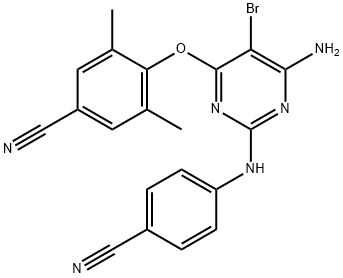
- Chemical Name:Etravirine
- CAS:269055-15-4
- MF:C20H15BrN6O
- Structure:
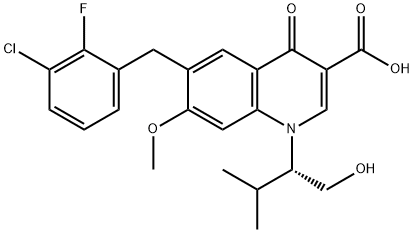
- Chemical Name:Elvitegravir
- CAS:697761-98-1
- MF:C23H23ClFNO5
- Structure:
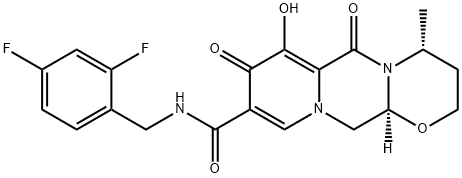
- Chemical Name:GSK1349572
- CAS:1051375-16-6
- MF:C20H19F2N3O5
- Structure:

- Chemical Name:4-[[4-[[4-[(E)-2-cyanoethenyl]-2,6-dimethyl-phenyl]amino]pyrimidin-2-yl]amino]benzonitrile
- CAS:500287-72-9
- MF:C22H18N6
- Structure:

- Chemical Name:DAPIVIRINE,4-[[4-(2,4,6-TRIMETHYLPHENYL)AMINO]PYRIMIDIN-2-YL]AMINO]BENZONITRILE
- CAS:244767-67-7
- MF:C20H19N5
- Structure:
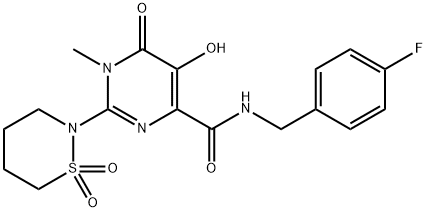
- Chemical Name:BMS707035
- CAS:729607-74-3
- MF:C17H19FN4O5S
- Structure:
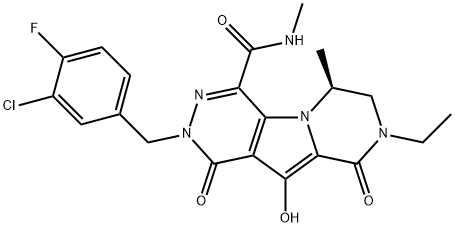
- Chemical Name:MK-2048
- CAS:869901-69-9
- MF:C21H21ClFN5O4
- Structure:
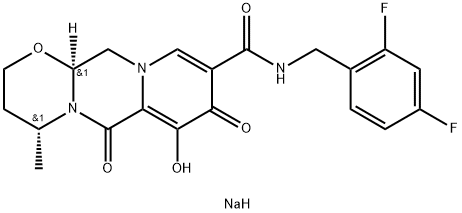
- Chemical Name:Dolutegravir sodium
- CAS:1051375-19-9
- MF:C20H20F2N3NaO5
- Structure:
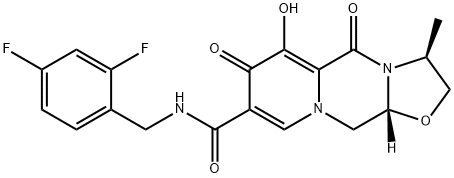
- Chemical Name:Cabotegravir (GSK744, GSK1265744)
- CAS:1051375-10-0
- MF:C19H17F2N3O5
- Structure:

- Chemical Name:HIV-1 integrase inhibitor
- CAS:544467-07-4
- MF:C11H9N3O4